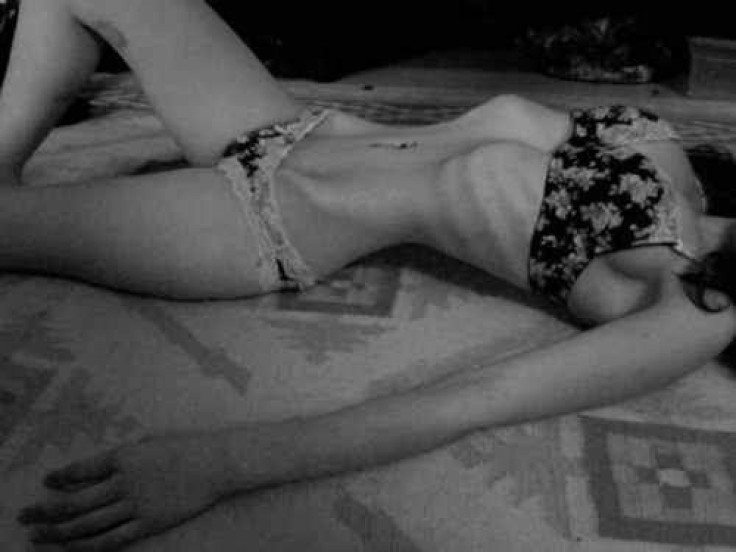Instagram ‘Thinspo’ Ban Won’t Combat Pro-Eating Disorder Web Content

When it comes to eating-disorder sufferers, popular social media sites have been a go-to source for “thinspiration.” The term applies to content used expressly to promote dangerous eating habits, such as fasting, severe calorie restriction and self-induced vomiting. “Thinspo” often includes photos of emaciated models and svelte celebs, as well as harmful weight-loss tips and quotes that glorify starvation.
Now Instagram is under fire for failing to adequately ban images that promote unsafe (and sometimes deadly) dietary practices.
According to the Telegraph, Beat, a UK organization that works to aid those grappling with eating disorders, believes the popular photo-sharing site could be doing more to remove photos that may be classified as “thinspo.”
"It's worrying that, with the powerful medium of social networking and the growing popularity of phone apps such as Instagram, people are able to easily access images that encourage the individual to believe that an eating disorder is a lifestyle choice and to avoid treatment," a spokesperson for the organization told the outlet. "Some sites have acted to remove content that is seen as dangerous and encouraging people to do dangerous things. Eating disorders as a lifestyle choice should be treated in the same way."
In April, the site took measures to eliminate photos promoting self-harm by reworking its user guidelines.
The instructions read: “Don't promote or glorify self-harm: While Instagram is a place where people can share their lives with others through photographs, any account found encouraging or urging users to embrace anorexia, bulimia or other eating disorders or to cut, harm themselves or commit suicide will result in a disabled account without warning.”
Though searching for the hashtag “thinspo” has been disabled, the criticism stems from the fact that terms like “ana” (short for anorexia and in many cases referring to “pro-ana” behavior) and “mia” (short for bulimia or “pro-mia”) still yields thousands of results.
While some of the images that come up are geared toward those in recovery, others can have damaging consequences.
One photo, posted by the user SkinnyGirlsDiePretty, shows a skeletal, bikini-clad form along with the quote “I’ll stop when I’m thin.”
Another, uploaded by AnitaWantToStarve, shows a cup of coffee and a cigarette and uses hashtags like #starve, #noeat and #mia.
Last year, sites like Tumblr and Pinterest cracked down on posts that may be deemed harmful or promote masochistic behavior.
Furthermore, when users search for tags like “thinspo,” “proana” and “purge,” they are provided with the contact information for the National Eating Disorder Association Helpline.
Yet both sites remain a resource for those looking for “thinspo.”
Though entering “bulimia” into Tumblr’s search bar can provide users with recovery tips and positive encouragement (one photo shows a toilet with a note that reads “stay strong”), it also brings up horrific images that show women with protruding ribs and Kate Moss’ highly controversial quote, “Nothing tastes as good as skinny feels.”
Pinterest, which banned thinspo pinboards, still contains pro-eating disorder images, but the content is less horrifying than it once was.
Despite the changes made to these growing sites, no amount of moderating is going to eliminate the online community’s ability to glorify and promote eating disorders.
Facebook has long been a resource for pro-ana or pro-mia groups looking to share and compare extreme weight-loss goals while pro-eating disorder websites began catching the media’s attention as early as 2001.
The issue gained considerable attention following stories like Time’s “Anorexia Goes High Tech” by Jessica Reaves and the Oprah Winfrey Show Episode “Girls Who Don’t Eat.”
Since then, the dangerous relationship between eating disorders and the Internet has been a topic of discussion. However, sites such as ProAnaLifeStyle and Pro-Thin continue to have a devoted following.
Marci Warhaft-Nadler, author of "The Body Image Survival Guide for Parents: Helping, Toddlers, Tweens and Teens Thrive,” believes that these sites can have detrimental consequences.
“What things like ‘thinspo’ pictures on Pinterest and Instagram, as well as pro-anorexia like ProAna do, is give people suffering a deeper hole to crawl into by pushing them further away from positive influences.”
Pro-Ana Nation operates under the belief that “anorexia is a lifestyle not a disease.” Many of the sites' users post such alarming statements as “Eating = fat and fat is DISGUSTING. Control is beautiful,” and “Fasting, purging and envy of thin women.”
Unsettlingly, Pro-Thin offers purging tips for bulimics that include:
“Once you think you are finished purging, drink a big glass of water, do a couple of sit-ups and go for it again. MORE food will come up!”
“Having trouble getting those last bits out? Punch yourself in the stomach HARD -- it works wonderfully!”
Though the Web may have a hand in the development of eating disorders, the debate surrounding such illnesses does not end with the types of photos one can access or post on social networking sites.
According to National Association of Anorexia Nervosa and Associated Disorders Inc., roughly 24 million Americans are suffering from eating disorders. The organization has also determined more people will die from eating disorders than any other mental illness.
© Copyright IBTimes 2024. All rights reserved.











